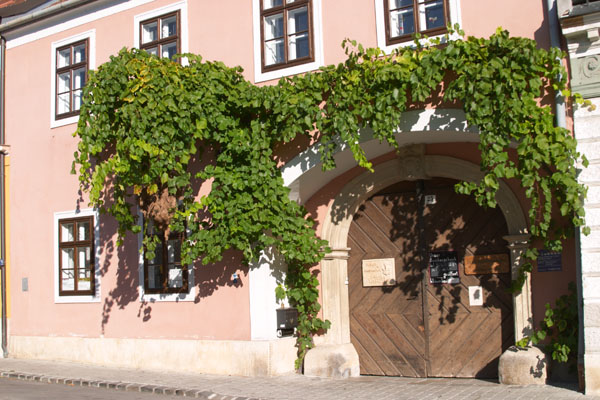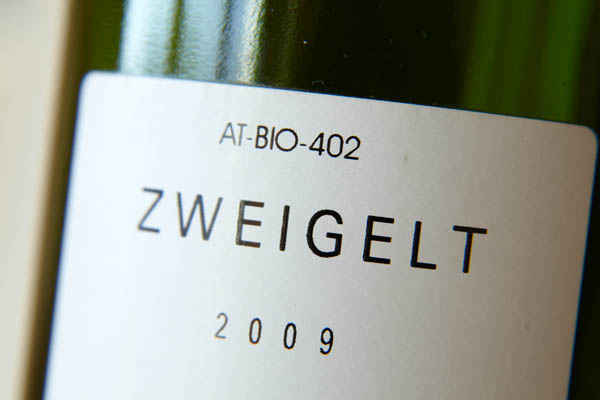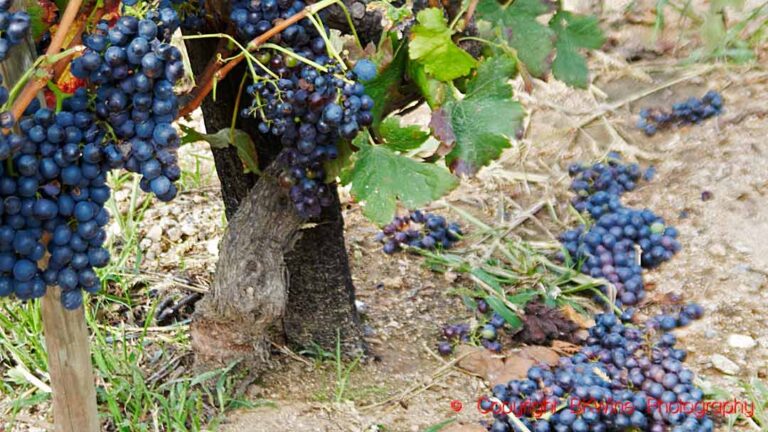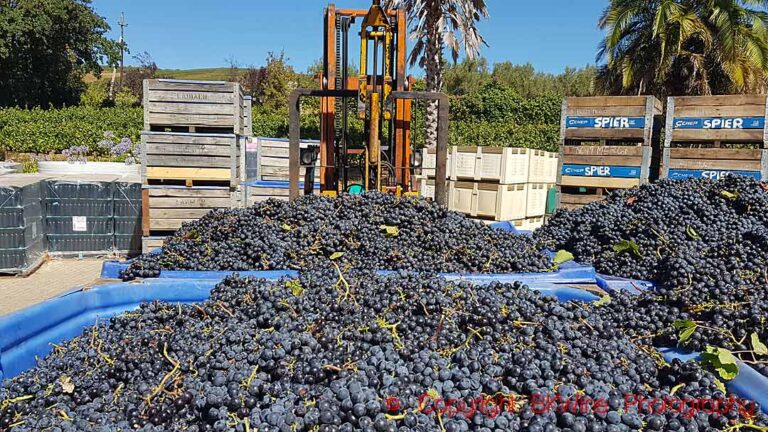It seems that the wine harvest in Austria was a difficult one but that in the end it can give some good wines, albeit with high acidity (good aging potential?), and some excellent sweet wines.
We have not been in Austria this year, unfortunately, so we cannot give you our own impressions. We have previously published our comments on the harvest in some other countries to where our wine travel has taken us this year.
In the case of Austria I will share with you the information that we have received from the Austrian Wine Marketing Board. It is a press release and as such one has of course to read it with a certain awareness. But it contains a lot of interesting and concrete information that gives you a good impression of what the growing season and the wine harvest was like in Austria in 2013.
Read on!

Press release, 14 November 2013
The Austrian Vintage 2013 – A Year Full of Surprises
The 2013 vintage was a tricky year for Austria’s winemakers. More recently it was the predictions for the small harvest, which at 2.25 million hectolitres is approximately seven percent less than the five year average. Before this, fluctuations in weather conditions caused vineyards to develop at varying stages. This left winemakers faced with the challenge of determining the optimal time of harvest and still achieving the desired amount of sugar in the berries. This also meant that the grapes had to be handled accordingly in the cellar. The harvest will be a slightly smaller one but the vintage is of highly satisfactory quality and is characterised by fruitiness and drinkability.
Weather conditions 2013 – late bud break and coulure
The moderately cold and damp winter meant that bud break occurred later than in 2012. Fortunately frost did not cause any significant damage this year; however some areas felt the repercussions of last year’s frost on their yield.
Flowering took place roughly two weeks later than in previous years, which corresponds with a “normal” flowering time if one considers the long term average. Unfortunately, the weather conditions at that particular time in June were rather unfavourable: wet and cold weather followed a heat wave which caused fertilisation problems and coulure (editor’s note: uneven flowering and fruit setting).
This hit grüner veltliner, Austria’s flagship variety, particularly hard. Especially the regions along the river Danube such as the Wachau, Kremstal and Kamptal, but also the Pulkatal and the northern part of the Weinviertel were affected, which led to a smaller yield in those areas.
Summer swelter and drought
The summer of 2013 was one of the five hottest summers of the last century. The prolonged dry spell delayed the ripening process, as vines assimilate far less during very hot periods. Young vineyards with a poor supply of water faced big problems this year.
The rain came just in time at the end of August which finally increased the amount of sugar in the berries, albeit rather slowly. Thankfully hail caused less damage than last year, although 2,500 hectares of vineyards were hit this year, primarily in Burgenland and Lower Austria, causing approximately € 5 million worth of damage.
When to harvest – a question of nerves
Following the onset of rain in September, Austria’s winemakers were faced with a difficult decision: should they start harvesting early in the hope of avoiding the bursting of the compact grapes, or wait and hope for the grapes to develop more sugar?
Both options were dependent on the meticulous work in the vineyard and the winemaker’s decision to take a risk on the weather. As it turned out, sugar levels only increased slowly, but the cool start to October helped keep the grapes healthy. The warm, damp and foggy weather at the end of October provided ideal conditions for botrytis, which meant that enough noble sweet wines were harvested.
Great, tight wines, as well as wines with crisp acidity. It looks like an outstanding sweet wine year.
When asked to comment on the 2013 vintage, Willi Klinger, Managing Director of the Austrian Wine Marketing Board, said “The 2013 vintage will bring us great, tight wines that will still delight in 20 years, as well as wines with crisp acidity that will challenge in their youth. I’m particularly excited about what looks like an outstanding sweet wine year.”

Niederösterreich (Lower Austria)
The poor flowering weather mentioned above caused losses in harvest yield, especially for Austria’s flagship grüner veltliner. The only place that remained relatively unaffected was the southern Weinviertel. It has to be mentioned that the dry spell in Poysdorf lasted right through September.
The harvest itself brought some surprises with it. The traditional order regarding which grape varieties are usually harvested first had to be changed around in some cases. The sugar content of some of the early varieties and aromatic varieties increased very slowly. By waiting for the physiological ripeness of the grape, winemakers ensured that this year’s rather distinct acidity could be well integrated.
For the most part, the weather cooperated during harvest time, although some thorough, labour-intensive grape selection was necessary. In some cases it was even possible to choose the character of the wine by deciding whether the grapes should be harvested with or without botrytis.
Some single vineyard wines weren’t harvested till the beginning of November. Riesling wines picked at this point are already showing fruit and ripeness, partly thanks to botrytis, but they still have enough acidity to give the wines longevity and a racy touch.
Harvest yield per hectare played a vital role this year which led to a wide spectrum of aromas – from fruity and light to spicy and intensive. The wines are fruity with distinct acidity while the moderate alcohol content ensures their drinkability.
What’s interesting this year is the positive side effect of the dry spell: while the relatively small berries didn’t contain much juice, the skins were full of aromatic substances which gave the wines some pretty intense aromas. Niederösterreich (Lower Austria) definitely has enough red wine, but while this vintage won’t be as sumptuous as some of the others, it will be a fruity, wonderfully drinkable wine.
Burgenland
The words “beautiful – hot – wet” can also be used to describe this year in Burgenland. The grapes took their time to ripen and those winemakers who were brave enough to wait patiently were rewarded with beautifully ripe ones. In terms of quantity, an average harvest yield is expected. Blaufränkisch was the only grape variety in Burgenland to be affected by coulure.
The 2013 vintage is aromatic and fruity with consumer-friendly alcohol levels. Furthermore, warm and damp weather in October and the resulting botrytis led to outstanding noble sweet wines.
Steiermark (Styria)
The harvest in Austria’s most southerly wine growing area was fairly average with 200,000 hectolitres or approximately 27 million bottles of wine. Selection was necessary during picking but the extra work was worth it.
Lighter wines were harvested earlier and the good weather conditions in Styria meant that single vineyard wines and Reserve wines were able to ripen fully. The winemakers’ hard work and strong nerves were rewarded: the healthy grapes produced delicately fruity, not too opulent wines with good acidity for harmony and balance.
Wien (Vienna)
The winemakers in Vienna are very happy with this year’s vintage. Satisfactory quantity, wonderful fruit, good acidity backbone and varietal typicity – it’s all there. Meticulous work in the vineyard managed to keep problems such as dryness and risk of disease in check, and grape selection ensured top quality grapes. Botrytis set in at the end of October.
While the “Junger Wiener” (Viennese young wines) were being presented in the centre of Vienna, the sweet wine harvest was still going on in the Viennese vineyards: a rather rare occurrence.
The 2013 vintage allowed Austrian winemakers to demonstrate their expertise and know-how. Although faced with difficult weather conditions, they displayed their ability to select the optimum harvest time and then nurture this year’s vintage in the cellar to bring out its fresh and fruity character. The remaining challenge is for wine lovers to discover the complex and positive surprises and the broad spectrum of aromas that the 2013 vintage has to offer.
Press information
Austrian Wine Marketing Board
Susanne Staggl
[box type=”info” style=”rounded” border=”full”]
Does this make you want to discover more about Austrian wines? Why not do it on-site in Austria! Contact BKWine to discuss a wine tour to the Austrian wine regions.
Travel to the wine country with the wine experts and the specialist on wine tours.
[/box]









